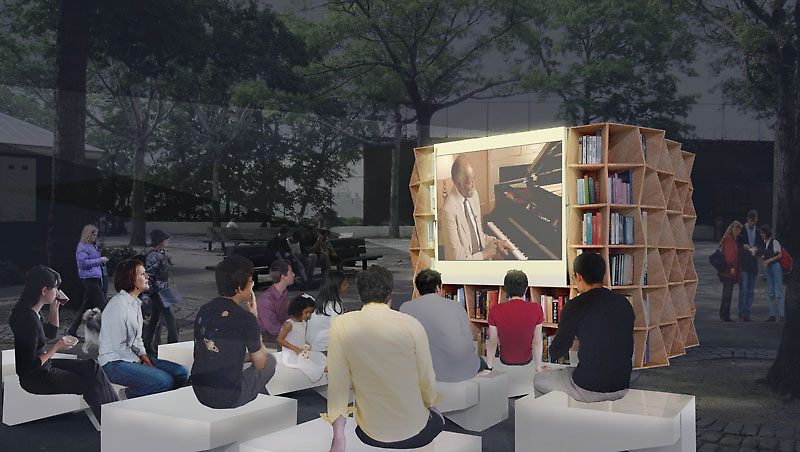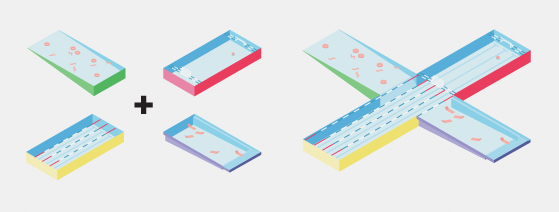
The Pebble (via Kickstarter)
When Kickstarter launched in 2009 as the “funding platform for creative projects” most of the projects were small in scale and consumer in intention. Need the studio time to record your next album? Need the printing costs to produce your first book? Need to make prototypes for the next big X, Y or Z? The big design success story was the TikTok band, which turned your iPod Nano into a wristwatch, and raised almost one million dollars on the site. This year’s version, an e-paper watch named Pebble, raised $7 million. (Watch the numbers grow on this nifty New York Times graphic.) Two thousand five hundred people contributed to the TikTok in its first three days on Kickstarter and, as Michael McGregor wrote on the Kickstarter blog in November 2010,
For as long as we can remember products just appeared. We knew nothing of the production process, or who the device’s authors might be. Not anymore. As Scott Wilson professes in his first project update, “I believe this is a significant milestone in product development history. And you are part of it. Part of what I consider will eventually be a common way for individuals, DIYers, small groups and aspiring entrepreneurs to realize their dreams. And you were there at the beginning.”
McGregor’s post was titled “A New Era for Design.” It made sense to ask the people of the internet for money, because they were not only your investors, they wanted to be your customers. Kickstarter combined fundraising with opinion polling, marketing with grant-writing. And if you were lucky, one of the reward system built into the fundraising meant you would be the first to hear, see, read or use the production in question.

TikTok+LunaTik (via Kickstarter)
The process required to be a Kickstarter success, now summarized and codified on many other websites, reflects this consumer focus. A video, not too slick, but not too amateur. Relentless working of social media and casual contacts. Rewards. In the future, Kickstarter seemed to me to suggest, the socially awkward and untelegenic need not apply. But on the flipside, if Kickstarter could make industrial designers’ dreams come true, who was I to question it?
But then it mushroomed. Stories late last year (later debunked) suggested that Kickstarter would soon fund more creative activity than the National Endowment for the Arts. And more types of projects, design not just for the wrist, started to try to get in on the action. Which made me very nervous. Kickstarter is not a popularity contest, or a democracy. Kickstarter’s editorial teams selects which projects go on the blog. Their declaration of a glorious new era for design suggests that projects that aren’t Kickstarter worthy aren’t worthy. (Here’s Rob Walker’s New York Times Magazine story on the site, “The Trivialities and Transcendence of Kickstarter,” which goes into all the details.) A suitable funding platform for a watch is not a suitable funding platform for a city. The expectations, the timeline, the relevant community are all wildly different.

The Uni (via Kickstarter)
Most of the Kickstarter projects under the Design tab congregate around the themes of bikes, cheese, typography and iAnything, yet there is now a subset of urban interventions. A plastic tent for a livability conference in Prague. Uni, a portable open-air reading room for New York. A rooftop farm in Mumbai. The filtration system for +Pool.
What do these projects have in common? First, they are in famous cities. Second, they access hot-button urban topics: rooftop farms, reclaimed railroads, (self-reflexively) urban conversation itself. And third, they are gizmos. Critic Reyner Banham, in the oft-quoted essay “The Great Gizmo” posited that it wasn’t massive infrastructure projects that changed our world, but devices. Urbanism would lose out to industrial design. And that’s just what’s happening on Kickstarter. You wouldn’t Kickstart a replacement bus line for Brooklyn, but you might Kickstart an app to tell you when the bus on another, less convenient line might come. You can’t Kickstart affordable housing, but the really cool tent for the discussion thereof. Gizmo is close to gimmick, and worthy goals have to be dressed up in complex geometries for Kickstarter.

The LowLine (via New York Magazine)
The example of Kickstarter urbanism par excellence is Delancey Underground, aka the LowLine, which raised $155,000 on Kickstarter earlier this year. (Pocket change, yes, in comparison to the Pebble.) The idea for the LowLine is to take a 1.5 acre abandoned trolley terminal on the Lower East Side and to turn it into what co-founders Dan Barasch and James Ramsey were, at least initially, calling a park. The renderings show multi-racial families enjoying the indoor sunlight, an accordionist, cooing couples, poured concrete benches. It looks a bit like Cobble Hill Park, with a psychedelic ceiling instead of the sky. The founders raised those funds with little more than those renderings and a nickname, as the images, first shown in New York Magazine in September 2011, swiftly made the rounds of New York City publications and techy blogs. (The rounds now seem almost pre-ordained, from Co.Design to WIRED, TechCrunch to Gizmodo, Bits blog to think piece.) When the LowLine launched on Kickstarter in February 2012, the audience of urban-dwelling, tech-savvy patrons was pre-sold on the park as gizmo, and seemed to expect it to pop right up like a watch. But what they were actually paying toward was a sub-gizmo, a test run of the skylights that would filter daylight underground. The consumable dream was years and bureaucracies away. The original appeal of Kickstarter was a one-to-one relationship with the artist, without layers of grant. Who was the artist here? And weren't donors just a precursor to grants?
Look at the differences between the LowLine and the unsuccessful $4200 effort to fund a new ping-pong table for Gulick Park, also on the Lower East Side. The first is physical, practical, and achievable. If you are part of the physical community, you would be able to see the fruits of your donation within months. The second is seed money for seed money. If the designers build a better skylight, then they might be able to attract more backers, then they might be able to make a deal with the city, and then they might be able to create whatever it is. True, the Gulick Park Kickstarter page is somewhat depressing and pedestrian, but that’s what most urban intervention is. Small steps. Sometimes dirty. The High Line didn’t get Von Furstenberg money until a lot of unphotogenic, person-to-person tasks had been completed. The timeline for urban projects, the real-life approvals and the massive construction costs, are ill-suited for the Kickstarter approach. All the format can handle is a little, gizmo-like piece of the puzzle.

+Pool (via Kickstarter)
I’m hardly the first to have noticed this disconnect. Brickstarter, a still-evolving platform developed by a project team at Sitra including Dan Hill and Bryan Boyer, seems like an attempt to right some of the wrongs and frustrations Kickstarter urbanism could create. A recent post by Boyer asked,
As the interest in crowdfunding for local projects continues to grow, we’re digging into the nitty gritty of what this actually implies. What is really being funded and what’s the extent of the community participating?
In the Brickstarter mission statement, the creators describe Kickstarter’s strengths: “aggregating attention,” “story-telling,” “community fundraising” (though how the physical rather than just the social media community will be accessed remains unclear) and add the element of time. A “dashboard” would chart desire versus institutions and legislation. In a more recent post, on post-earthquake rebuilding projects in Chile, the creators start to narrow the bullet points for participatory success and add physicality to the mix. “Build a focal point”: have a space in which people can see progress and participate. This is not a gallery, which suggests mere display, and also something more results-focused than, say, the BMW Guggenheim Lab. “Start with a proposal”: not renderings, but a malleable first draft. Rather than the storytelling emphasized by all successful Kickstarter pitchmen and –women, this model asks the community on the ground to help write the story. It puts the platform back in its place as a service rather than a molder of culture.
So, save your money. If you want to fund urbanism on Kickstarter, think small. For the big picture, a park, a pool or a playing field, maybe a new social media platform will emerge, ready to walk you through the meetings and legislative hiccups, with fundraising for photocopying as well as fiber-optics. If that's not satisfying enough, maybe you should go offline and to your community board meeting. Participate in participatory budgeting. Stop starting at that gizmo and look at what your local park needs. Maybe it is a plastic bubble. Maybe it is a ping pong table. The park is going to require a lot more doing than $5 and "Great idea!"
